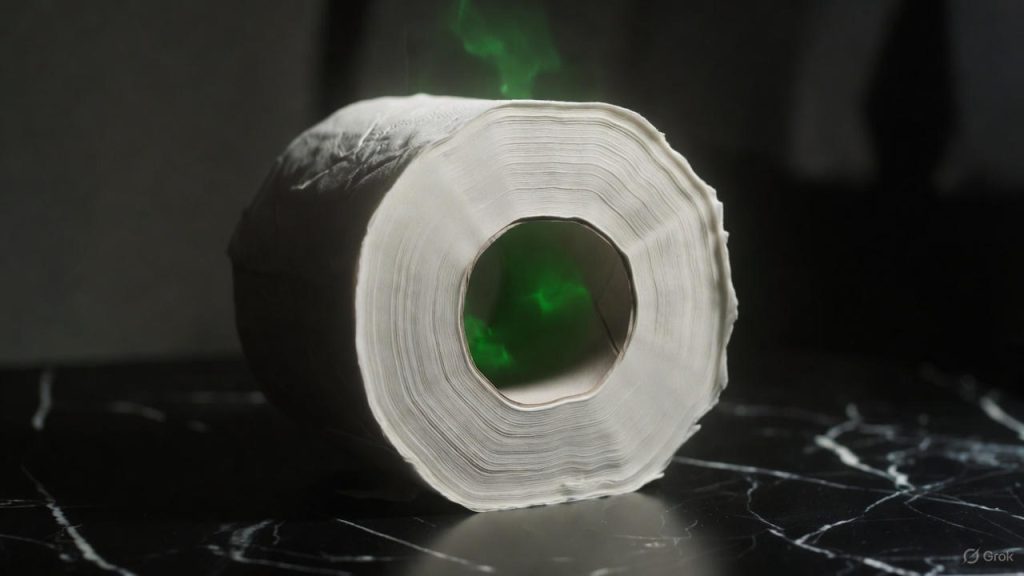Introduction
Toilet paper is an essential part of our daily lives, often taken for granted as a mundane necessity. However, recent revelations have shed light on concerning secrets hidden within the seemingly innocent toilet paper rolls. Studies have shown that regular toilet paper may contain harmful chemicals known as PFAS or “forever chemicals,” which pose risks to both human health and the environment.
This in-depth exploration delves into the manufacturing process of toilet paper, investigating whether PFAS are introduced during production. Additionally, we examine the misconception surrounding recycled toilet paper, as it does not necessarily guarantee a safer option. Furthermore, we provide answers to frequently asked questions about toilet paper, exploring its environmental impact and the arguments for different roll orientations.
The Manufacturing Process – PFAS Contamination?
The Toxic Truth in Every Roll Your Toilet Paper Is Laced with Cancer-Linked Forever Chemicals
Fact: Every single roll of toilet paper sold in America contains PFAS. Peer-reviewed studies confirm it. No exceptions.
How PFAS Get In
The industry swears they don’t “add” PFAS. They’re right — they don’t add it. They grind up thermal receipts and greasy pizza boxes coated in PFAS, then turn that sludge into the “ultra-soft” sheets you buy.
Result:
- Recycled rolls → 100 % contaminated
- Virgin rolls → 100 % contaminated
- Zero difference in PFAS levels
The American Forest & Paper Association admits traces exist but blames “external sources.” Translation: they know it’s there and ship it anyway.
The Only Real Fix
Stop wiping with poison.
Bidets cuts toilet paper use 75–95 % → 75–95 % less PFAS in your body and our water.
15,768 fewer toxic sheets flushed per year. That’s the math.
Keep buying Charmin and you’re choosing forever chemicals. Switch to a bidet and you’re done.

Recycled vs Non-Recycled Toilet Paper – Challenging Assumptions
In an era where eco-friendly products are highly sought after, the assumption that recycled toilet paper offers a safer alternative is debunked. A recent study comparing both recycled and non-recycled toilet papers revealed an unsettling truth: regardless of the source of the pulp, both variants contained similar amounts of diPAPs, a primary compound found within PFAS. This discovery challenges the belief that environmentally friendly options are always healthier choices. Consumers need comprehensive information to make informed decisions and demand safer standards across industries.
Key Takeaway: Don’t assume recycled toilet paper is safer. Both recycled and non-recycled options contain similar amounts of harmful chemicals like diPAPs, challenging the perception that environmentally friendly products are always healthier choices. We need better information to make informed decisions and demand safer standards.

Conclusion
The presence of PFAS in toilet paper has unveiled an unexpected health and environmental concern. Disubstituted polyfluoroalkyl phosphates (diPAPs) play a significant role in contributing to human health risks and wastewater pollution. While the manufacturing process remains contested by industry representatives, it is crucial to address the potential sources of PFAS contamination.
The notion that recycled toilet paper is a safer alternative is challenged by recent research, which reveals that both recycled and non-recycled options contain similar levels of PFAS. The impact of these forever chemicals on human health cannot be underestimated, as they are linked to serious diseases like cancer, liver disease, kidney disease, and more.
Moving towards safer alternatives is not only beneficial for individual health but also crucial for overall environmental well-being.

Innovative Solution: A Path to Safer and Environmentally-Friendly Toilet Paper
To eliminate dependency on potentially hazardous toilet papers while ensuring optimal cleanliness, a viable solution lies in adopting innovative alternatives. Several eco-conscious brands have started producing toilet paper that is free from PFAS and other harmful chemicals. They utilize sustainable materials such as bamboo, which is renewable and requires less water and fewer resources to grow. Furthermore, these products often come in unbleached options, reducing the use of harmful chemicals in the bleaching process.
Additionally, consumers can contribute to a healthier environment by opting for bidets or bidet attachments, which significantly reduce toilet paper consumption. These alternatives not only promote personal hygiene but also minimize the environmental impact associated with traditional toilet paper usage.

Rethinking How We Handle Daily Necessities
Toilet paper is just one example of an everyday item that deserves closer scrutiny. As consumers, we hold the power to demand safer and more sustainable products from manufacturers. By seeking comprehensive information, making informed decisions, and advocating for higher safety standards, we can contribute to a healthier future for both ourselves and the planet.
In conclusion, the unassuming toilet paper is far more complex than meets the eye. From potential chemical contamination to environmental implications, there is a need for greater awareness and a collective effort to ensure the safety and sustainability of this daily essential. By embracing innovative solutions and rethinking our consumption patterns, we can pave the way towards a cleaner, safer, and healthier world.

FAQs in Relation to Toilet Paper
-
What is a fact about toilet paper? The average American uses approximately 57 pounds of toilet paper each year, contributing to over 19 billion pounds flushed annually in the U.S.
-
What are the environmental issues with toilet paper? Toilet paper production contributes to deforestation and water pollution. Additionally, some brands contain PFAS chemicals that can harm both human health and wastewater systems.
-
What are the arguments for under toilet paper? “Under” advocates argue it’s harder for pets or children to unroll, reduces wastage, and looks tidier. However, personal preference often determines orientation.

